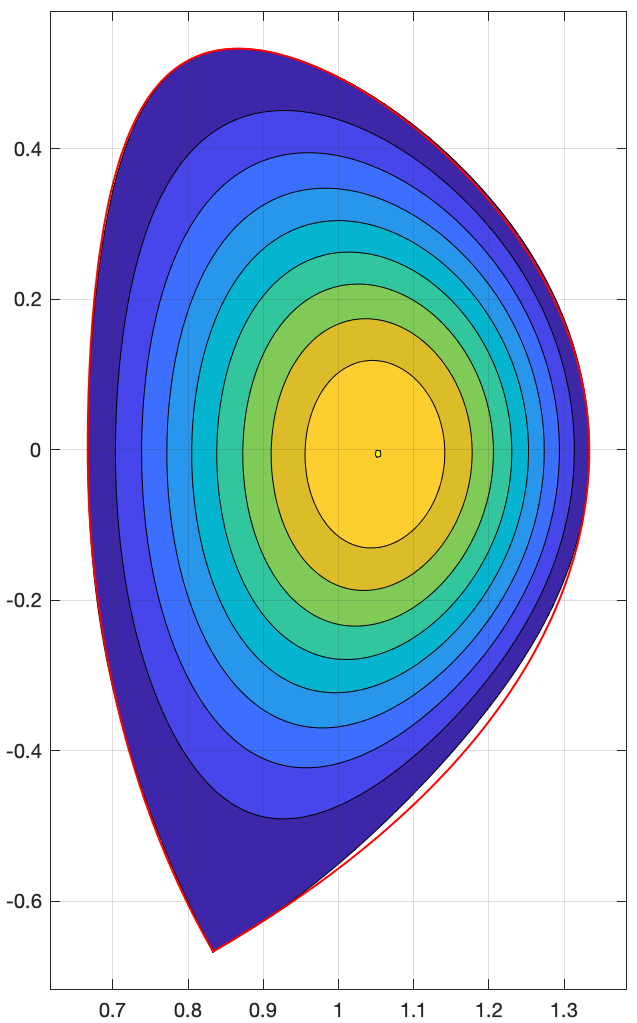Simple, general, realistic, robust, analytic tokamak equilibria

Introduction
In this line of research we explored analytic tokamak equilibrium solutions. By "analytic" it is meant that solutions are written in terms of elementary functions such as polynomials, sines and cosines. Analytic equilibria are of interest for a number of reasons, including but not limited to:
These equilibrium solutions are more "realistic" than existing ones in the sense that they include arbitrary macroscopic toroidal rotation and finite edge pedestals. They also maintain the realistic (quadratic) shapes for the free functions assigned as input. Arbitrary plasma shapes are allowed, including single- and double-null configurations without any assumed restrictions on e.g. aspect ratio, elongation or triangularity. Importantly, the solutions are exact, i.e. they do not require any expansion in some small parameter.
References and support material:
The Matlab code used to produce the results of this research project is freely available below. Interested users are encouraged to contact Dr. Guazzotto with any questions or requests.
zip file containing the Matlab code used to evaluate static analytic equilibria
zip file containing the Matlab code used to evaluate analytic equilibria with flow
The numerical evaluation of the analytic equilibria should be fairly self-explanatory for both versions. Interested users should read at least paper 1 before trying to use the "code". The only place where changes are needed is the input section.
Two papers on this topic have been published in Journal of Plasma Physics:
[L. Guazzotto and J. P. Freidberg J. Plasma Phys., 87, 905870303 (2021)];
[L. Guazzotto and J. P. Freidberg J. Plasma Phys., 87, 905870305 (2021)].
The author-submitted versions can be freely downloaded:
Here is the author-submitted version of paper 1 (not restricted by the journal copyright policy).
Here is the published version.
Here is the author-submitted version of paper 2 (not restricted by the journal copyright policy).
Here is the published version.
Contact: Luca Guazzotto, Auburn University
| Copyright notes: Any use of the provided Matlab code should be acknowledged. Keeping Dr. Guazzotto informed of any use or development related to the code will be greatly appreciated. |
|
Warranty: The software provided in this page comes with no warranty, either explicit or implied. |
last modified June 2 2022